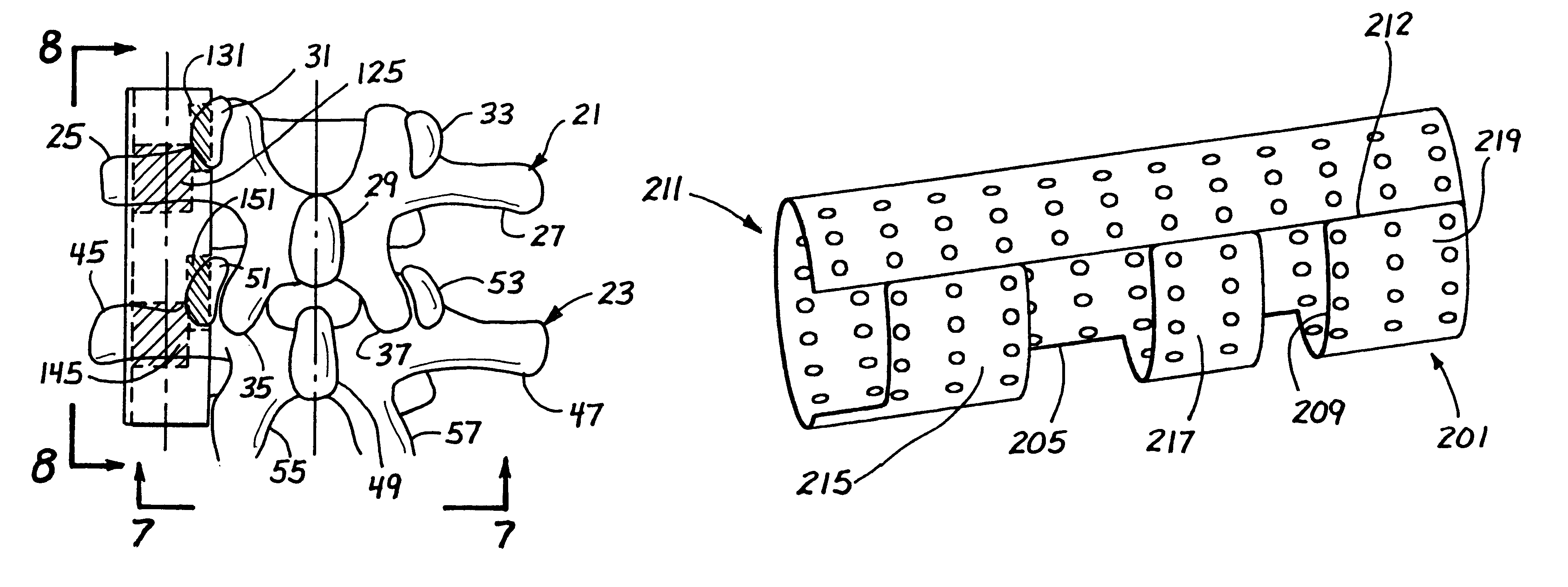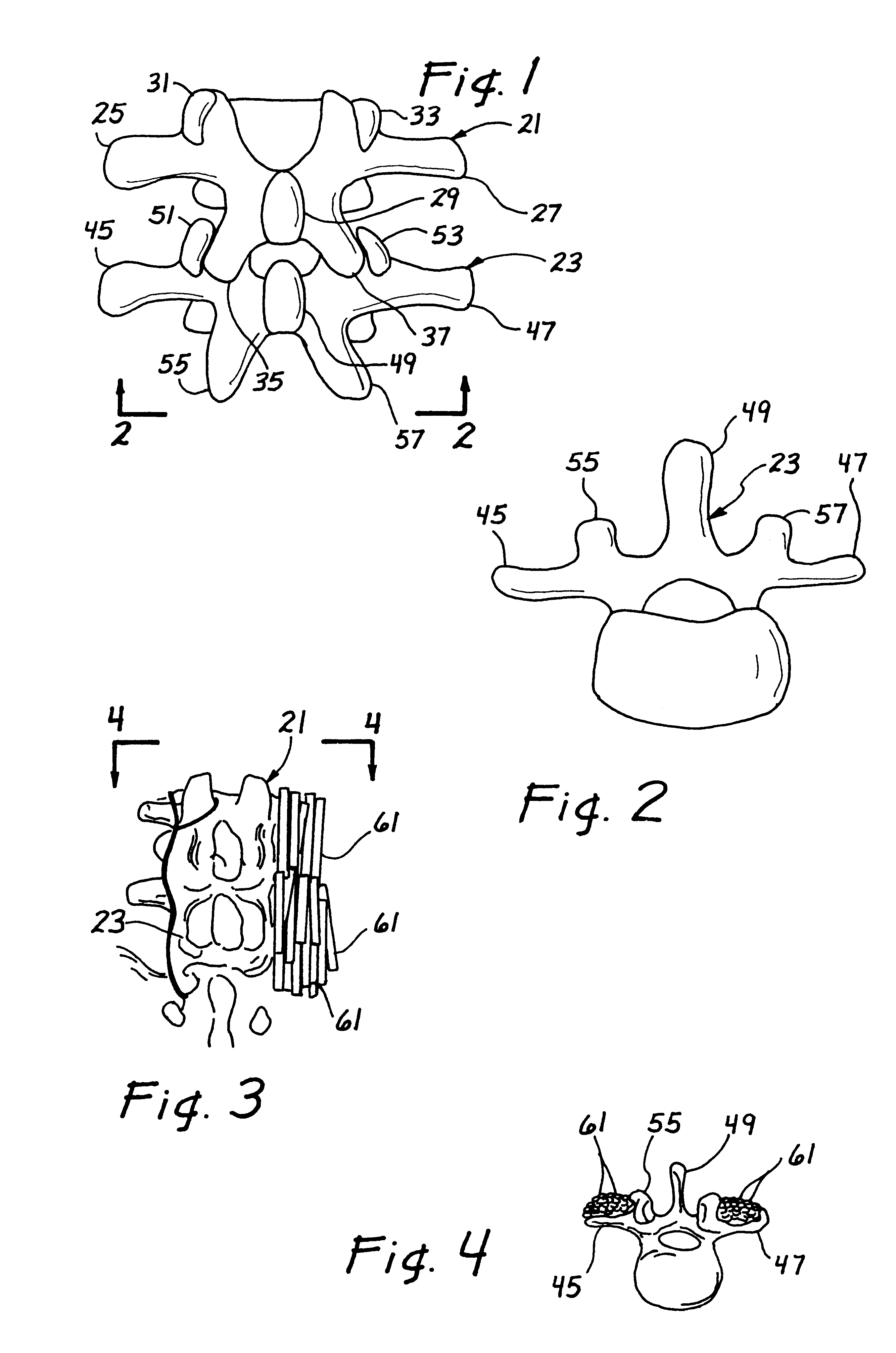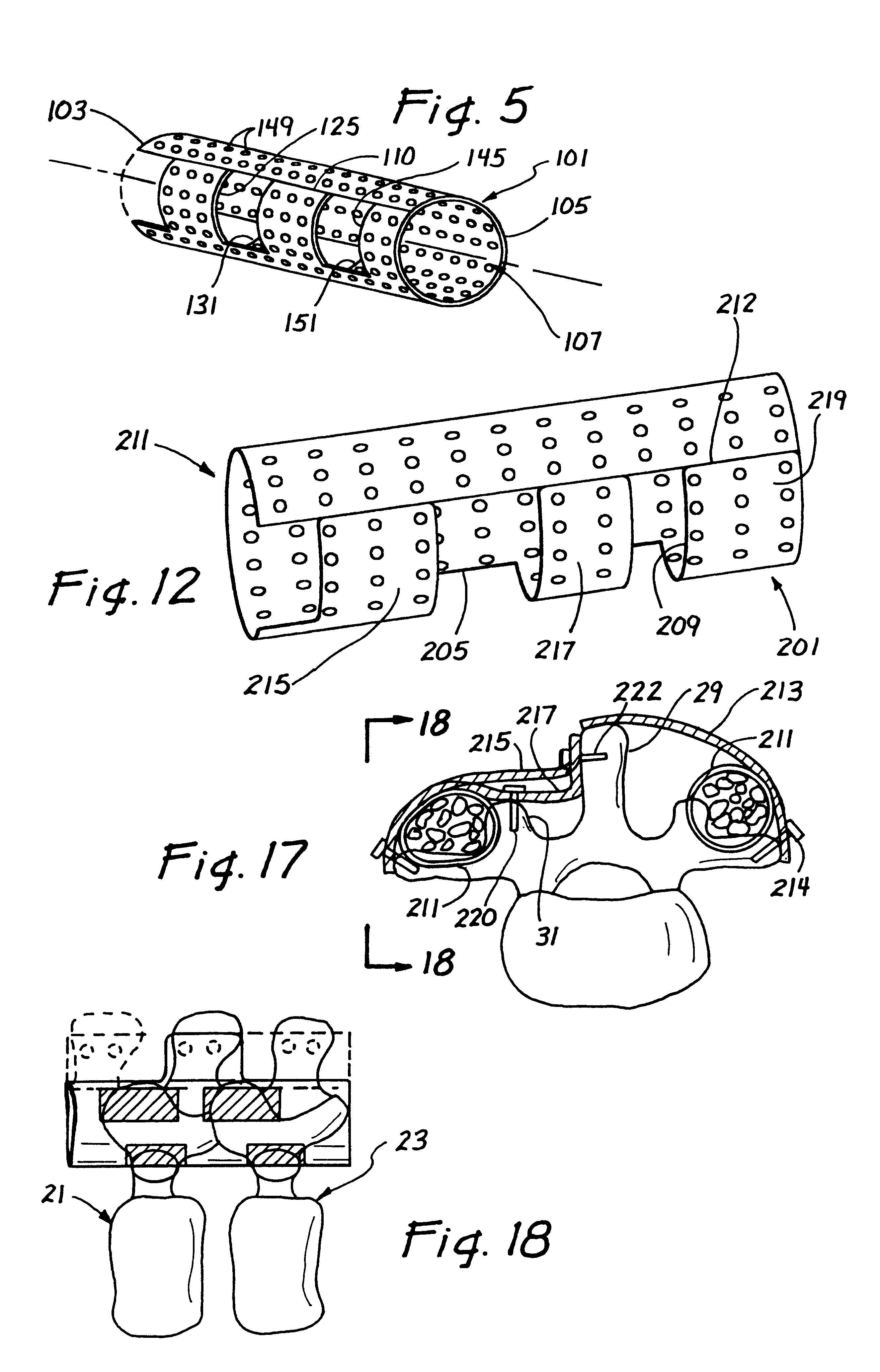Resorbable posterior spinal fusion system
a posterior spinal fusion and fusion system technology, applied in the field of medical implants, can solve the problems of debility and disability, back pain remains a major public health problem, and one or more vertebrae and/or one or more discs may become damaged and malfunction,
- Summary
- Abstract
- Description
- Claims
- Application Information
AI Technical Summary
Problems solved by technology
Method used
Image
Examples
Embodiment Construction
Turning to FIG. 5, a rolled resorbable membrane 101 is shown for facilitating posterior lateral fusion of at least two vertebrae. The rolled resorbable membrane 101 is sized and shaped to be placed into contact with at least two adjacent vertebrae and to facilitate osteogenic fusion between the vertebrae. As presently embodied, the rolled resorbable membrane 101 comprises a first end 103, a second end 105, and an axis 107 extending between the first end 103 and the second end 105. A lumen 107 extends along the length of the axis 107 between the first end 103 and the second end 105.
In the illustrated embodiment, the rolled resorbable membrane 101 is formed into a cylindrical shape wherein the first end 103 and the second end 105 are open to the lumen 107. This cylindrical shape may be achieved by providing a planar resorbable membrane and bringing two opposing edges together. In the embodiment of FIG. 5, a planar, rectangular resorbable membrane with four edges is wrapped around a ma...
PUM
| Property | Measurement | Unit |
|---|---|---|
| Time | aaaaa | aaaaa |
| Thickness | aaaaa | aaaaa |
| Thickness | aaaaa | aaaaa |
Abstract
Description
Claims
Application Information
 Login to View More
Login to View More - R&D
- Intellectual Property
- Life Sciences
- Materials
- Tech Scout
- Unparalleled Data Quality
- Higher Quality Content
- 60% Fewer Hallucinations
Browse by: Latest US Patents, China's latest patents, Technical Efficacy Thesaurus, Application Domain, Technology Topic, Popular Technical Reports.
© 2025 PatSnap. All rights reserved.Legal|Privacy policy|Modern Slavery Act Transparency Statement|Sitemap|About US| Contact US: help@patsnap.com



